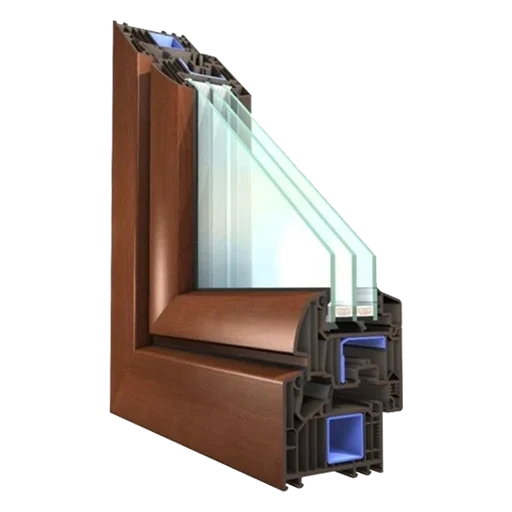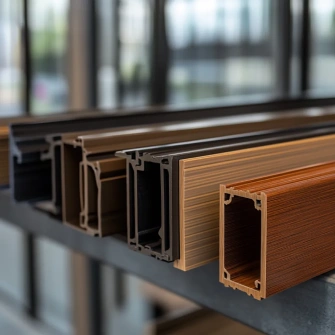Best choose
Vinyl
Vinyl is a synthetic polymer derived primarily from polyvinyl chloride (PVC) resin. Modern vinyl formulations may also include additives like impact modifiers and UV stabilizers, which make it stronger, more flexible, and resistant to environmental stresses. In the realm of windows and doors:
PVC Resin forms the base of the frame material.
Additives such as stabilizers and colorants improve durability, insulation, and appearance.
Extrusions create the frame profiles, which are then cut, joined, and reinforced (if necessary) to form complete units.

Color and Style Options
Modern vinyl technology offers more finishes, shapes, and sizes than ever before.
Long-Term Durability
Properly manufactured and installed vinyl frames can last for decades without significant deterioration.
Minimal Maintenance
No painting, staining, or sealing required. Simple cleaning keeps frames looking fresh.
Key Features of Vinyl Windows and Doors
- Multi-Chamber Profiles
Internally, vinyl extrusions contain multiple hollow chambers. Each chamber acts like an insulating barrier, improving thermal performance and sound damping. - Advanced Glazing
Most vinyl frames accept double- or triple-pane glass with Low-E coatings and inert gas fills (like argon). This synergy between vinyl and modern glazing offers formidable energy efficiency. - Weatherproofing Elements
Gaskets, seals, and weatherstripping around sashes and frames keep out drafts, moisture, and contaminants. Fusion-welded corners minimize corner leaks. - Hardware Integration
Vinyl frames can accommodate standard or premium hinges, locks, and handles. Many doors feature multi-point locking systems for enhanced security.



Frequently Asked Questions (FAQ)
Are vinyl windows and doors truly energy-efficient?
Yes. Vinyl’s low thermal conductivity, combined with multi-chamber profiles, makes it excellent at reducing heat transfer. Paired with high-quality glass (like double- or triple-pane Low-E), vinyl units can significantly lower your energy bills.
Will vinyl frames fade or discolor under intense sunlight?
High-quality vinyl includes UV inhibitors that resist fading or yellowing. While slight color changes can occur over many years – particularly in extremely sunny regions – most reputable manufacturers offer warranties to protect against severe fading.
Do vinyl doors and windows come only in white?
No. While white is still the most common, many brands now provide various colors (black, brown, gray, etc.) and even woodgrain laminates. Custom color options may cost more but can enhance curb appeal and interior décor.
Can vinyl frames crack in very cold temperatures?
Modern vinyl is engineered with impact modifiers that allow it to remain resilient, even in colder climates. However, extremely low-grade vinyl could become brittle in subzero temperatures. Choosing trusted, energy-rated products minimizes this risk.
How do I tell if the vinyl product is high-quality?
Look for ENERGY STAR-qualified units, NFRC ratings, and brand reputation. Check for features like fusion-welded corners, multi-chamber extrusions, robust warranties, and UL or AAMA certifications for performance.
Do vinyl frames lower the value of my home compared to wood or fiberglass?
In most cases, well-made vinyl windows and doors increase a home’s value, especially if they boost energy efficiency and curb appeal. While some premium buyers might prefer wood or clad frames for aesthetic reasons, vinyl is widely accepted as a cost-effective upgrade.
Can I paint vinyl frames if I want a new color in the future?
Technically yes, but it’s best to use specialized vinyl-safe paints. Painting vinyl can void warranties if not done according to manufacturer guidelines, and color performance may vary. Many homeowners prefer ordering vinyl windows with a factory-applied color from the start.


